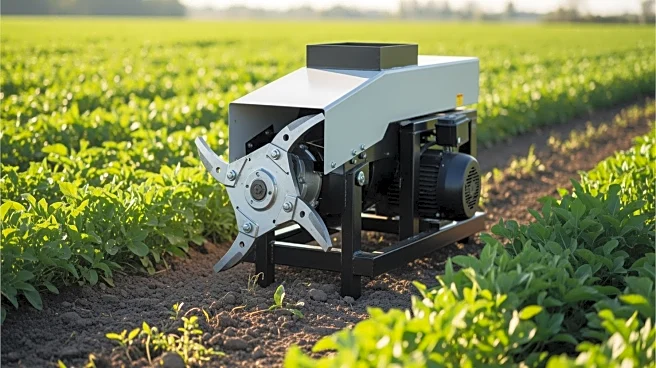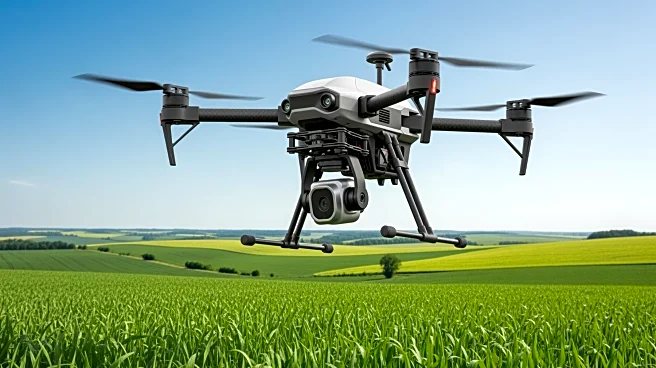What's Happening?
The global agriculture tires market is experiencing significant growth driven by technological advancements, increased farm mechanization, and a rising demand for efficient agricultural equipment. The market,
valued at USD 10.8 billion in 2025, is projected to reach USD 15.4 billion by 2032, growing at a compound annual growth rate (CAGR) of 5.2%. This growth is fueled by the modernization of agriculture and the integration of advanced tire technologies, which are enhancing durability, reducing soil compaction, and improving fuel economy. The shift from traditional bias-ply to radial tire construction is a key factor in this market evolution, as radial tires offer superior performance and longevity. The demand for high-horsepower tractors and harvesters is also driving the need for heavy-duty tires with advanced tread patterns.
Why It's Important?
The expansion of the agriculture tires market is crucial for the agricultural sector, as it supports the transition to more mechanized and efficient farming practices. This shift is essential for meeting the growing global demand for food and ensuring food security. The adoption of advanced tire technologies contributes to sustainable farming by minimizing soil compaction and enhancing crop productivity. Additionally, the market's growth presents opportunities for innovation in tire design and materials, which can lead to more eco-friendly and durable products. The increased mechanization and modernization of agriculture are particularly significant in emerging economies, where government incentives and subsidies are promoting the adoption of advanced farming equipment.
What's Next?
As the agriculture tires market continues to grow, manufacturers are likely to focus on developing new technologies and materials to meet the evolving needs of the agricultural sector. The integration of smart sensors for tire pressure and temperature monitoring could become more prevalent, enabling predictive maintenance and operational optimization. The rise of autonomous tractors and precision farming systems may also drive demand for tires with embedded electronics for real-time feedback and data analytics. In emerging markets, government support for mechanization is expected to further boost demand for advanced agricultural equipment and tires.
Beyond the Headlines
The growth of the agriculture tires market has broader implications for environmental sustainability and economic development. By promoting more efficient and sustainable farming practices, the market contributes to reducing the carbon footprint of agriculture and enhancing food security. The development of eco-friendly tire materials and retread solutions aligns with global sustainability goals and offers a competitive advantage to manufacturers. Additionally, the market's expansion supports rural development and job creation in regions where agriculture is a key economic driver.











